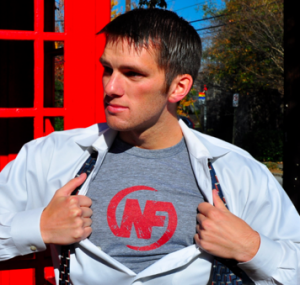Why You Should Embrace Your Vulnerability

It’s hard to ignore the illustrious health benefits of exercising on a regular basis – it boosts your mood, helps you control your weight, promotes a good night’s sleep and keeps your body strong and fit.
Even if you have a chronic disease, being physically active can improve your health and quality of life, by helping you manage your symptoms and giving you more energy to do your daily chores.
But for people with persisting health problems, there are many obstacles between them and a regular exercise routine – from pain, fatigue and debilitating symptoms to limited mobility and realistic fears of health setbacks.
That’s why I asked a few of the finest fitness experts: “What’s your best advice for overcoming these common barriers to physical activity when someone’s struggling with chronic illness?”
 Steve Kamb – Rebellion leader at Nerd Fitness
Steve Kamb – Rebellion leader at Nerd Fitness
To be a 100% honest with you, I don’t feel comfortable answering your question, just because I’m just a nerd and not a doctor or physical therapist.
The best I can come up with? A quote from Teddy Roosevelt: “Do what you can, with what you have, where you are.” We’re all dealing with different situations, and we all have to attack each situation differently. Don’t worry what others are doing, and don’t worry about what you can’t do. Focus on what you CAN do and work on getting a little bit better in that way each and every day.
Bonus tip: Check out Steve’s ‘Mile Everyday Challenge’ for a fun and easy way to start building a more active lifestyle. Walking your Morning Mile (or in my case, a mid-morning kilometer) can really have a positive effect on your overall health in the long run!
 Hayley Hobson – Holistic health coach and yoga diva
Hayley Hobson – Holistic health coach and yoga diva
I think that’s a really tough question, because pain is pain and there are so many levels of it. It would be unfair for me to tell people they can work around it if the intensity level for them is unbearable. Whereas for others, it really could be mind over matter.
A positive attitude is super important. And when we think positively, I do believe we can overcome most odds. So my best advice is to try to work with the situation the best that you can, and try to see some positive in every situation.
Bonus tip: In this post, Hayley shares 5 gentle exercises you can do while you’re stuck in bed.
 Tova Rott & Leon Kessler – Fitness for Chronic Illness
Tova Rott & Leon Kessler – Fitness for Chronic Illness
Bonus tip: Fitness for Chronic Illness offers a holistic wellness program for those struggling with chronic health problems, consisting of mind-body exercises tailored to your fitness level.

Kaila Prins – Health coach, certified personal trainer and blogger about recovery from eating disorders
It can be hard to see the glass as half full when you’re limited from doing the things you love. I think there’s nothing wrong with having a grieving period for the loss. You are entitled to feel your feelings, and you shouldn’t try to talk yourself out of them.
However, there will come a time when you are ready to pick yourself up and move on. A time when allowing chronic pain to rule your life will no longer feel acceptable. And it is then that you’ll be ready to go out and explore. You may find a new type of movement, a new love, that will inspire, energize and excite you. For me, it was leaving the world of bodybuilding and discovering yoga. I stopped running and learned to love walks with my dog on the days when I was able to do so. It’s all about being open to new practices instead of dwelling on the ones in which you can no longer participate. You may find that the pain is less noticeable when you are actively focused on something that moves you to move again.
Bonus tip: Read more about Kaila’s own experiences with exercising with injuries and persisting health problems on her blog, In My Skinny Genes.
 My own additional advice?
My own additional advice?
Start small, with doable activities that are suitable for your condition. Whether you’re bedridden, housebound or struggling to maintain a ‘normal’ life, choose gentle exercises that will most improve the quality of your daily life. Maybe circling your joints or doing a 5-minute yoga practice every day will help improve your blood flow and quality of sleep. Maybe you’d love to be able to effortlessly walk around town or go on a bike ride with your family. Or perhaps you just long for the energy to live your life to its fullest. No matter your situation, take a slow and steady approach and keep in mind why and what you’re fighting for.
When you’re building an exercise habit from scratch, it’s often easier on your body to start out with low-impact workouts such as walking, swimming, t’ai chi and yoga. Ask your doctor or specialist which kind of physical activity is best for your specific situation. Also, if you worry whether exercising could make your health problems worse (for example, after a heart attack or when you’re newly diagnosed with diabetes), check with your doctor if you’d be considered for a tailored rehabilitation program with other patients. Training under supervision of a physical therapist is also a sensible way to prevent unwanted health setbacks or injuries.
Bonus tip: Here are 19 quirky ideas to fit more physical activity into your busy day.
What would you add to this list of exercise tips?
BewarenBewarenBewarenBewarenBewarenBewaren